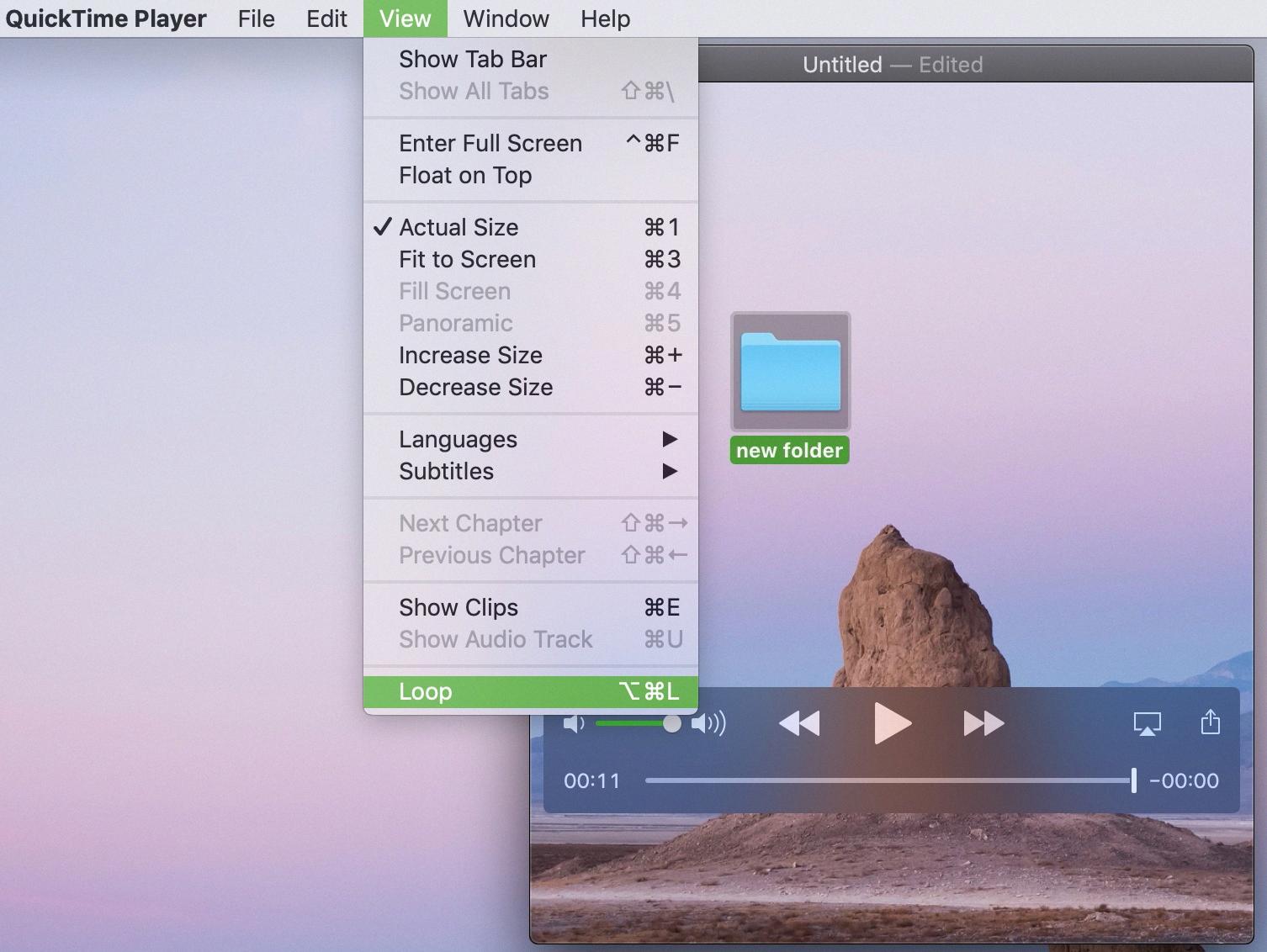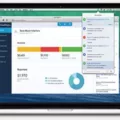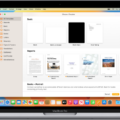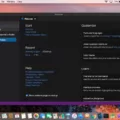Quicktime videos are one of the most popular video formats out there and they’re especially popular on Mac computers. If you’re a Mac user and you want to watch Quicktime videos, there are several different ways you can do so.
First, let’s talk about the QuickTime Player. This is an Apple program that comes pre-installed on all Mac computers. It’s designed specifically for playing QuickTime videos so it’s a great option if you want to watch them quickly and easily. To use the QuickTime Player, just open it up and then click “File > Open File…” or drag-and-drop the video into the player window. Once the video is loaded, you can play it just like any other type of media file.
If you don’t have the QuickTime Player installed or if you want to use another program for watching your videos, then there are plenty of other options available. VLC Media Player is a popular option that works with both Mac and Windows computers, and it can play almost any type of video file including QuickTime videos. You can download VLC for free from their website and then just install it on your computer.
If you don’t want to download any additional software, then you can also watch QuickTime videos in your web browser. Most modern browsers support QuickTime videos natively so all you need to do is find a web page that has a QuickTime video embedded in it (such as YouTube or Vimeo). Then just click on the video to start playing it in your browser window.
Finally, if none of these options work for some reason then there are still more alternatives available such as Elmedia Player or MPlayerX which both allow you to watch QuickTime videos on your Mac computer with ease.
Regardless of whch method you choose, watching QuickTime videos on a Mac computer is easy and straightforward as long as you have access to the right software or web page. With this guide in mind, we hope that watching your favorite QuickTime files will be a breeze!
Playing QuickTime Videos
Playing a QuickTime video on your device depends on the type of device you are using. If you are using a Mac computer, simply open the video in QuickTime Player and it should play automatically. On Windows computers, you may need to install an additional plugin such as Flip4Mac to be able to play QuickTime videos.
If you are using an iPhone, iPad, or Android device, you will need to download a video player app that supports QuickTime video formats. There are many apps available in the App Store and Google Play Store that can help with this. Alternatively, you can convert the QuickTime video into a compatible format before attempting to play it on your device.

Source: idownloadblog.com
Troubleshooting QuickTime Video Playback on Mac
It is possible that the QuickTime video you are trying to play on your Mac is not compatible with the version of QuickTime player installed. You need to make sure that the QuickTime player is updated to the latest version, so that it can read the file data and play the video. If you are running an outdated version, then this could be why it won’t play. You can also try playing other videos just to make sure that QuickTime is working properly.
Viewing Clips in QuickTime
To view clips in QuickTime, you can open the QuickTime Player window, then choose View > Show Clips. This will display all the clips contained within the file in the main window, with the playhead near the center. You can use this view to quickly scan through and find specific points of interest in your video or audio clip. You can also use it to adjust the start and end points of a clip by dragging either side of the playhead.
What Types of Files Can QuickTime Play on Mac?
QuickTime is a free media player developed by Apple and available for Mac users. It supports a variety of different file types, including video formats such as .mov, .mp4, .4mpv, MPEG-1, MPEG-2, 3GPP2, 3GPP, DV, AVI, and AVCHD and audio files such as MP3. QuickTime also supports other specialized video formats in addition to the most popular file types. For example, it can play H.264/AVC files from YouTube or iTunes Store videos without any additional software installed on your Mac. Additionally, QuickTime can playback flash movies (.swf) and some Windows Media files (.wmv). Finally, QuickTime can be used to view images and even create simple slideshows with music.
Converting QuickTime to MP4 on Mac
To convert QuickTime to MP4 on Mac, open the QuickTime Player app and choose File > Export As. From the Export menu, choose an appropriate resolution for your movie. Then, select the ‘Movie to MPEG-4’ option from the ‘Export Using’ menu. Finally, click ‘Save’ to complete the conversion process. The resulting file should be in an MP4 format.
Editing QuickTime Videos on Mac
Editing a QuickTime video on Mac is easy and straightforward. First, open the video in the QuickTime Player app. Then, choose Edit > Trim to enter trim mode. You’ll see a trimming bar with yellow handles at each end of the clip. Drag and move these handles to select the portion you’d like to keep in your clip, then click Trim to save it. You can also use other editing features such as adding effects, adjusting audio levels, creating chapters, inserting text or images into your video, and more.
Adding Files to QuickTime
In order to add files to QuickTime, you’ll need to open your desired file in the QuickTime Player app on your Mac. Once you’ve opened the movie, select View > Show Clips. To add a movie at the end of the movie, wthout selecting anything, choose Edit > Add Clip to End. If you’d like to insert a clip somewhere else in the timeline, click and drag it from its source window into the QuickTime Player’s timeline window. You can also use the command File > Open File… to open an additional file in QuickTime and have it appear next to your original file.
Does Apple Still Support QuickTime?
Yes, Apple stil supports QuickTime. The latest version, QuickTime X, is available for Mac OS X Snow Leopard up to macOS Mojave. However, Apple has ceased support for the Windows version of QuickTime in 2016, and ceased support for QuickTime 7 on macOS in 2018.
Replacing QuickTime With Apple’s New Technology
Apple is no longer officially supporting QuickTime for Windows. However, they have released iTunes for Windows as a suitable alternative. iTunes provides many of the same features and functions as QuickTime, including the ability to play and manage media files, purchase music, download podcasts and videos, access iTunes U educational content, and sync with iOS devices. Additionally, there are several third-party media players available that are capable of playing QuickTime files on Windows systems such as KM Player, VLC Media Player, and PotPlayer.
Difference Between MP4 and QuickTime
The main difference between MP4 and QuickTime is that MP4 is an international standard container format, while QuickTime (MOV) is a proprietary Apple file format for QuickTime. MP4 files are used more often than MOV files for streaming purposes since they are compatible with more streaming protocols.
MP4 files contain audio, video, and othr data in a single file. They can be played on most media players, including mobile devices and computers. On the other hand, MOV files are optimized for Apple products such as QuickTime Player and iTunes. MOV files typically contain video only, but can also include audio or other data such as subtitles or captions.
In general, both formats are widely used in media production and provide high-quality audio-visual content. However, MP4 offers more flexibility due to its compatibility with multiple platforms and devices.
Playing .MOV Files in QuickTime
To play a .MOV file in QuickTime, you first need to install the QuickTime Player on your Windows 10 device. To do this, go to the Microsoft Store and search for “QuickTime”. Once you have installed the program, find your .MOV file on your computer. Right-click on its name and select “Open With” from the list of options. Select “QuickTime Player” from the list of programs that appeas and it will open your video for you to watch. You can also drag and drop the .MOV file directly into the QuickTime Player window if you prefer.
Playing QuickTime Files from Older Versions
If you have an old QuickTime file (.mov) that you need to play, there are a few options available to you. The most compatible program for playing QuickTime files is Apple’s QuickTime Player, which is available as a free download from the Apple website. You can also open QuickTime files uing iTunes, Elmedia Player, Windows Media Player, and VLC media player.
To open a QuickTime file with QuickTime Player:
1. Open QuickTime Player.
2. Click File in the top menu bar and then select Open File…
3. Select the file that you want to open from your computer and then click Open. The file shold start playing in QuickTime Player.
To open a QuickTime file with another media player:
1. Download and install the media player of your choice (e.g., VLC, Elmedia Player).
2. Open the media player program on your computer.
3. Click File in the top menu bar and then select Open File… or Open Media… (depending on the program).
4. Select the file that you want to open from your computer and then click Open or Play (depending on the program). The file should start playing in the media player of your choice.
Do I Need QuickTime Player?
QuickTime Player is a cross-platform media player developed by Apple Inc. It is availble for both Mac OS and Windows and can be used to play, view, or record audio, video, and interactive media files. QuickTime Player is the default media player on the Mac operating system, acting as an all-in-one solution for playing multimedia content.
You may need QuickTime Player depending on what type of content you are trying to access or create. For example, if you are trying to watch a movie in MOV format or listen to an audio file in M4A format then you will need QuickTime Player to do so as these formats are not compatible with other media players. Additionally, if you wish to record audio or video files then QuickTime Player provides a suite of tools for dong so. Finally, it also provides support for virtual reality (VR) content which may be necessary depending on your particular use case.
Saving a QuickTime Video on a Mac
Saving a QuickTime video on a Mac is quite easy. First, open the QuickTime Player app on your Mac. Then, select the File menu and choose Save. You will be prompted to enter a name for the video in the Export As field, as well as add an optional tag if you wish. After that, you can choose where you would like to save your recording file and click Save. Your video will now be saved in the specified location.
Importing a QuickTime Movie into iMovie
To import a QuickTime movie into iMovie, start by launching iMovie and opening the File menu. Then select Import > Movies and locate the QuickTime movie file on your computer. Once you have selected the video file, click on Open to proceed with the import process. The video will be imported into the Event Library of iMovie, where you can drag and drop it into your project timeline as desired. After you have finished editing, you can save your project with the Export > Master File option.
Editing Videos with QuickTime Player
Yes, you can edit video in QuickTime Player. You can use the standard trim, rearrange and rotate tools to make basic edits to your video. Additionally you can split your movie into multiple clips and make any desired edits to each individual clip. QuickTime Player also gies you the ability to adjust the playback settings for your video, such as the playback speed and volume.
Playing Multiple Videos on QuickTime
To play multiple videos on QuickTime, you can either double-click each video file individually, or use the ‘Play All Movies’ option in the View menu. When you open each video file, a new QuickTime Player window will be created and you’ll be able to watch multiple videos simultaneously. To adjust the size of each window, hover your cursor over the corner of the window and drag it to make it larger or smaller. Additionally, if you want to control whih video is being played at any given time, simply click on its QuickTime Player window to select it.
Editing QuickTime Movies in iMovie
Yes, you can edit QuickTime movies in iMovie. With iMovie, you can trim and rearrange clips, add transitions, adjust volume levels and add music or voice-overs to the movie. You can also easily add text titles and graphics to create a professional-looking movie. When you are done editing the QuickTime movie in iMovie, you can export it as a variety of diffrent file formats for use in business presentations, conferences, meetings and websites.
Do I Need QuickTime Player on My Mac?
Yes, you do need QuickTime Player on Mac. QuickTime is a media player and framework developed by Apple Inc. that can play most types of audio and video files as well as digital images. It also supports streaming videos from the internet, podcasting, screen recording, 3D animation, and interactive virtual reality panoramas. QuickTime also features integration with iTunes to provie a seamless experience for users of both applications. With QuickTime, you can watch movies and listen to podcasts as well as view photos and share them with friends and family.
The Benefits of QuickTime Player on Mac
QuickTime Player is an essential tool for Mac users as it provids a wide range of powerful features for editing and playing movies. With QuickTime Player, you can easily trim, rearrange, rotate, and split your movies into multiple clips. It also supports a variety of video formats, allowing you to play any type of video on your Mac. Additionally, QuickTime Player provides advanced audio editing capabilities with support for the AAC audio codec, making it ideal for creating podcasts or music videos. Finally, QuickTime Player makes it easy to share your creations online with its built-in sharing options.
Alternatives to QuickTime Player for Mac
VLC Media Player is widely considered to be a better option than QuickTime Player for Mac. It offers more features, greater versatility, and a more user-friendly interface. Unlike QuickTime which only supports limited video formats, VLC supports almost all popular video formats such as MPEG, WMV, MP4, MKV, MOV and AVI. Furthermore, it provides advanced audio and video effects not available in QuickTime like the ability to adjust speed or pitch of audio or apply visualizations. Additionally, VLC is open source and free to use whereas QuickTime requires a subscription. Finally, compared to QuickTime’s linear interface with limited customization options, users can customize VLC’s interface using skins or adjust playback settings acording to their liking.
Conclusion
Quicktime Videos are an excellent choice for anyone looking to capture or view multimedia content. Its versatile system allows users to access and view a wide range of video content, including both audio and video files. With its powerful editing software, you can easily customize your videos with a variety of effects and transitions. Additionally, its built-in streaming capabilities make it easier to share videos acros multiple devices. Overall, Quicktime Videos are a reliable and easy-to-use option for creating, viewing, and sharing high-quality multimedia content.








